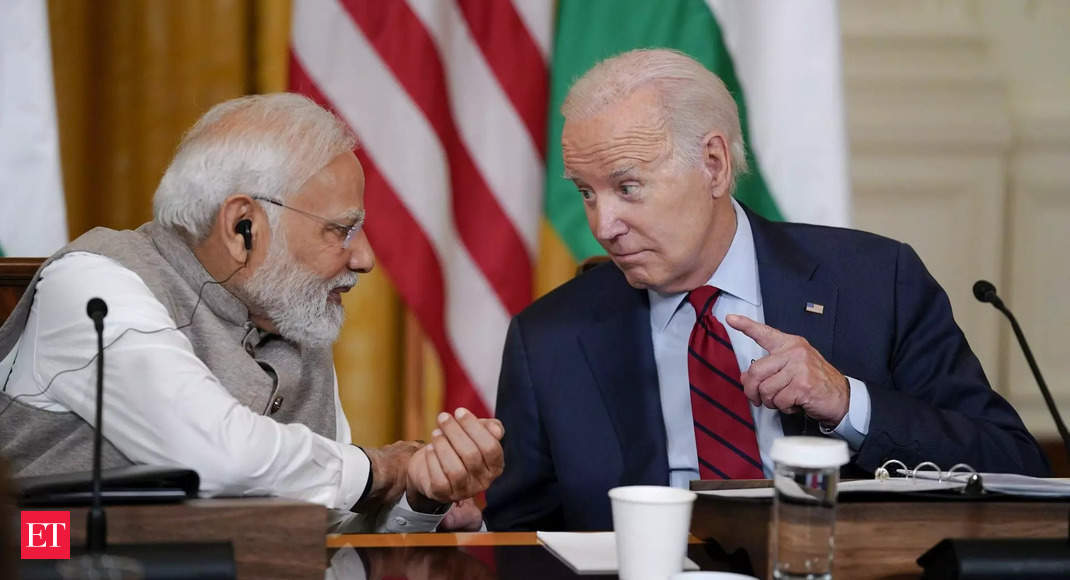The US administration has extended a rare invitation for a state visit to Indian Prime Minister Narendra Modi, signifying a significant development in US-India bilateral relations. This honor is rarely bestowed and denotes the highest level of protocol in the US system. The warm welcome and the discussions between the two leaders during the visit have showcased the trajectory of their inter-government relationship. The decisions announced during the visit indicate that US-India relations are now poised for another transformational leap.
President Biden, since assuming office, has invited only a few global leaders for state visits, including French President Macron and South Korean President Yoon. The invitation extended to Prime Minister Modi reflects the importance of the US-India relationship and the positive momentum it has gained in recent years.
To emphasize the bipartisan support for the India relationship, Prime Minister Modi also addressed a joint session of the US Congress, making it his second address since 2016. This rare opportunity has been given to only a few global leaders in the past, such as former British Prime Minister Churchill, South African leader Mandela, and Israeli Prime Ministers Rabin and Netanyahu.
During his address to the US Congress, Prime Minister Modi described the friendship between India and the US as a test met, highlighting the special place occupied by the US in India’s approach to the world. In a pre-departure interview, he expressed the unprecedented level of trust between the two leaders, indicating the strong foundation of their relationship.
Several path-breaking decisions have been announced during the state visit. One significant announcement is the transfer of technology and co-production of GE Aerospace’s F-414 jet engine in India, which has been described as unprecedented. This step holds great importance in strengthening India’s aerospace capabilities and deepening the defense ties between the two countries. Notably, a similar effort through the Defense Trade and Technology Initiative (DTTI) in 2014 had failed. In addition, three US companies, Micron, Applied Materials, and Lam Research, have announced investments in India’s semiconductor ecosystem. This breakthrough comes after more than a year of efforts by India in this domain.
The US Department of Defence Space Force has signed its first International Cooperative Research and Development Agreement with two Indian startups, showcasing the expanding collaboration in space technology. Furthermore, both countries have agreed to joint funding for the joint development and commercialization of artificial intelligence and quantum technologies. The establishment of a $2-million joint fund highlights the shared interests and goals in emerging technologies.
To strengthen the defense cooperation, a Defence Industrial Cooperation Roadmap has been signed, paving the way for future collaboration in defense manufacturing. Discussions have also been initiated on a Security of Supply Agreement and a Reciprocal Defence Procurement Agreement, which would enable Indian companies to supply defense equipment to the US. These agreements are crucial in deepening the defense partnership between the two nations.
The state visit has also led to the launch of the US-India Defence Acceleration Ecosystem (INDUS-X), which aims to facilitate joint defense technology innovation and coproduction of advanced defense technology. This collaborative initiative further strengthens the ties in the defense sector.
Additionally, India and the US have agreed to cooperate on human space flight and have plans to mount a joint effort to the International Space Station in 2024. This collaboration in the field of space exploration highlights the shared vision for advancing scientific endeavors.
All these areas of collaboration and the successful outcome of the visit have been enabled by the launch of the India-US Enduring Knowledge Partnership (iCET). Introduced in January this year, iCET emphasizes deeper collaboration in fields such as artificial intelligence, quantum, semiconductors, telecommunications, defense, and biotech. The commitment to this partnership has helped overcome regulatory hurdles and bureaucratic skepticism, ensuring the achievement of significant milestones during the state visit.
Importantly, the US-India partnership is now a two-way street. Indian companies have invested over $40 billion in the US, with a presence in all 50 states, demonstrating the growing economic ties. Similarly, US companies benefit from Indian tech human capital, with cutting-edge R&D and technology development work being carried out in both countries.
Despite the progress made, challenges remain in deepening the partnership. Technology will play a defining role in the future, requiring continuous efforts to address regulatory barriers and foster innovation. The Strategic Trade Dialogue, led by the foreign secretary, will play a crucial role in addressing these challenges. Sustained high-level attention is essential to ensure progress and overcome bureaucratic inertia. Both countries will enter election cycles in 2024, which could potentially divert attention. However, President Biden’s expected visits to India in 2023 and 2024 should reinvigorate efforts and maintain the focus on further advancing the partnership.
In conclusion, the state visit of Prime Minister Narendra Modi to the US has laid the foundation for a strengthened and transformational leap in US-India relations. The warm welcome, landmark decisions, and collaboration in various fields indicate the immense potential for further growth and deepening of the bilateral partnership. As both countries increase their bets on each other, continued efforts, addressing challenges, and sustained high-level engagement will be key to maximizing the benefits of this strategic relationship.











